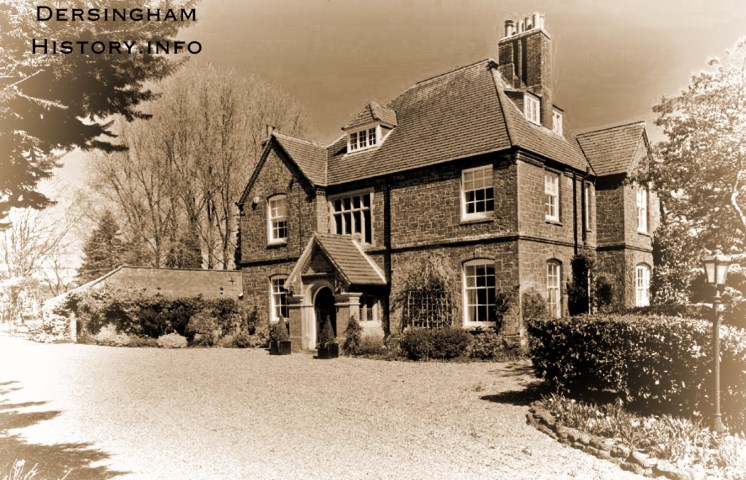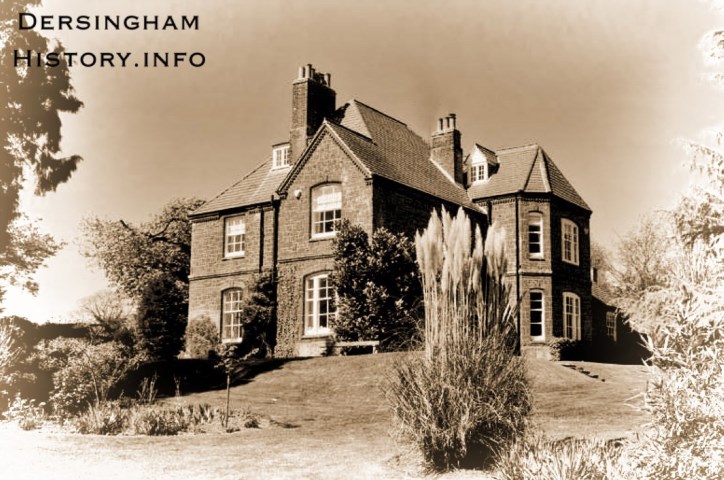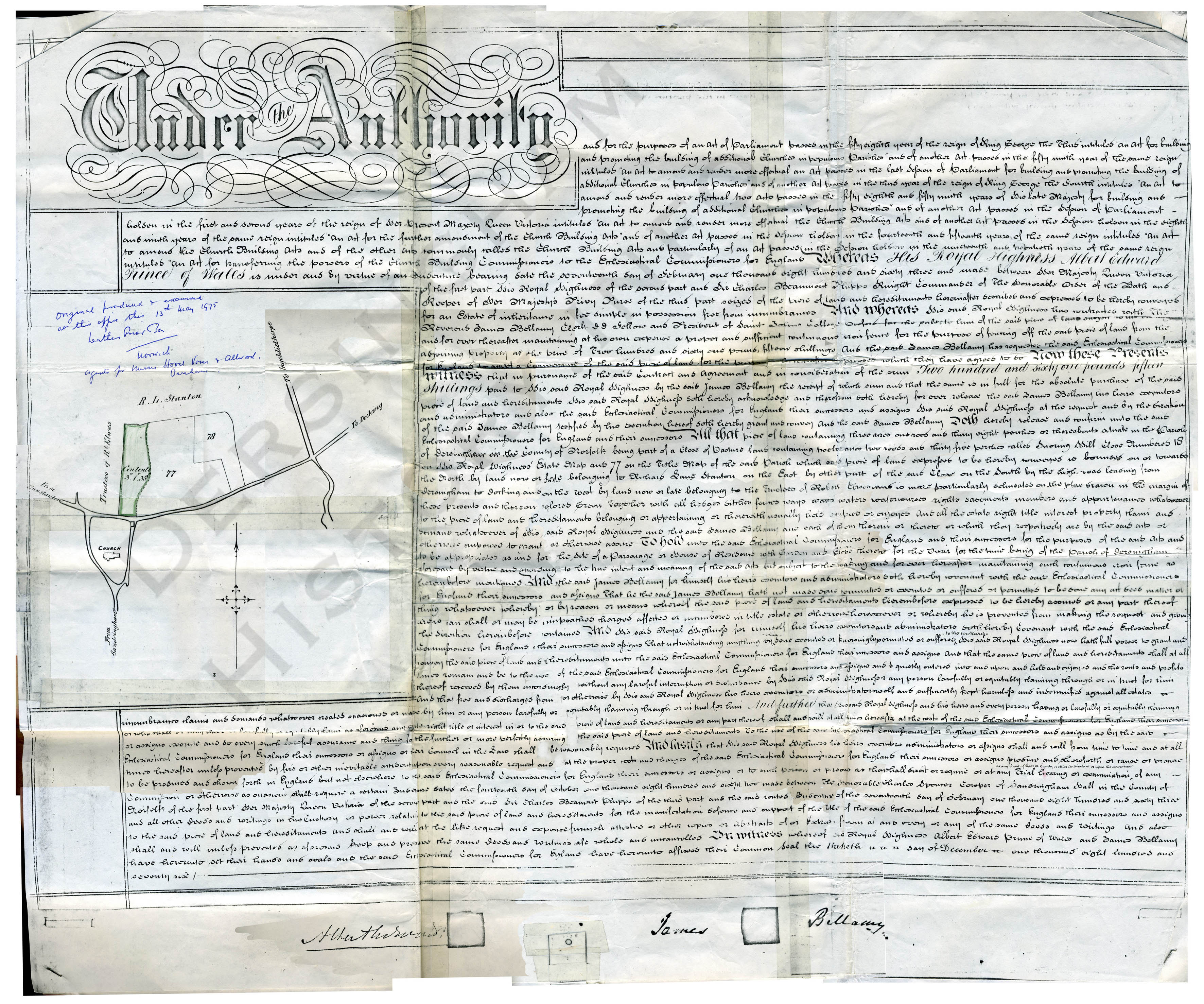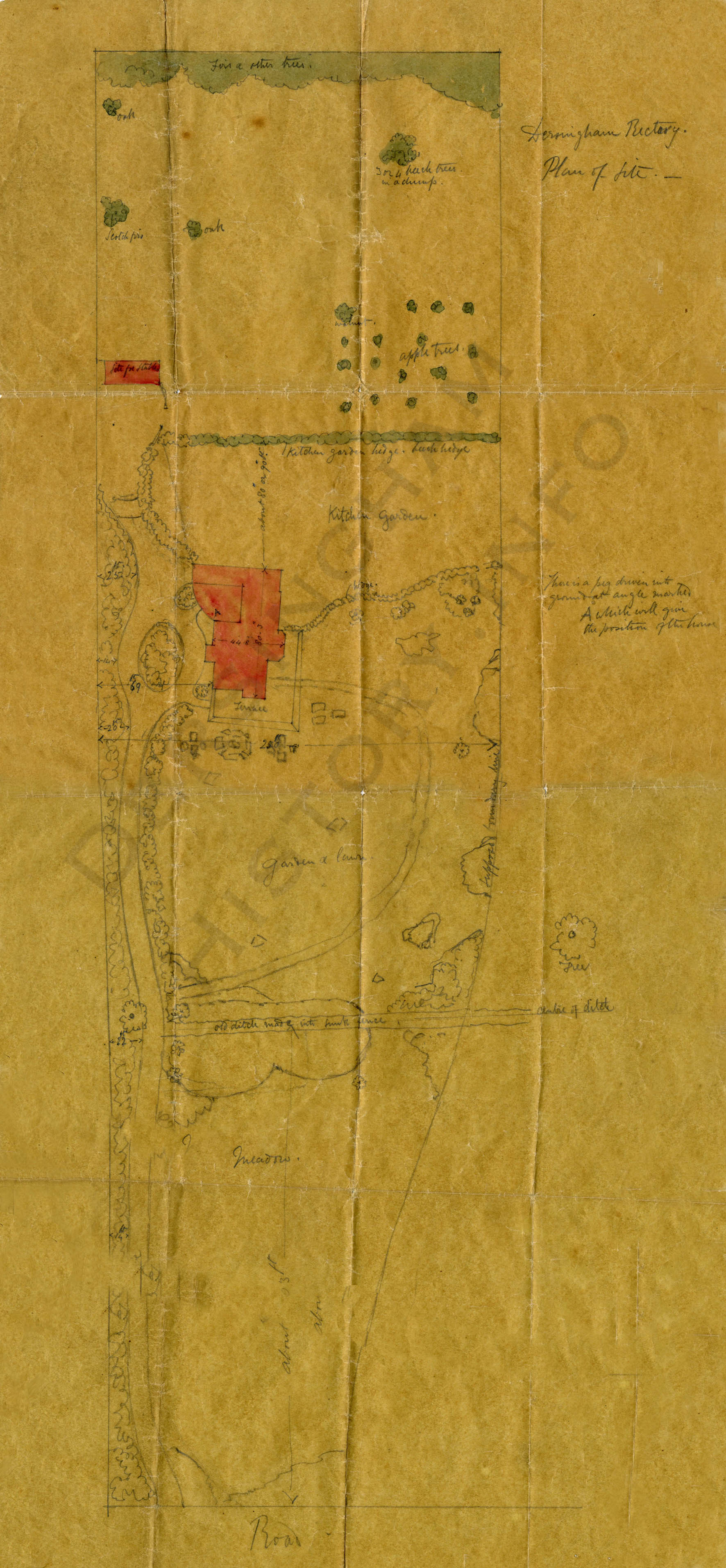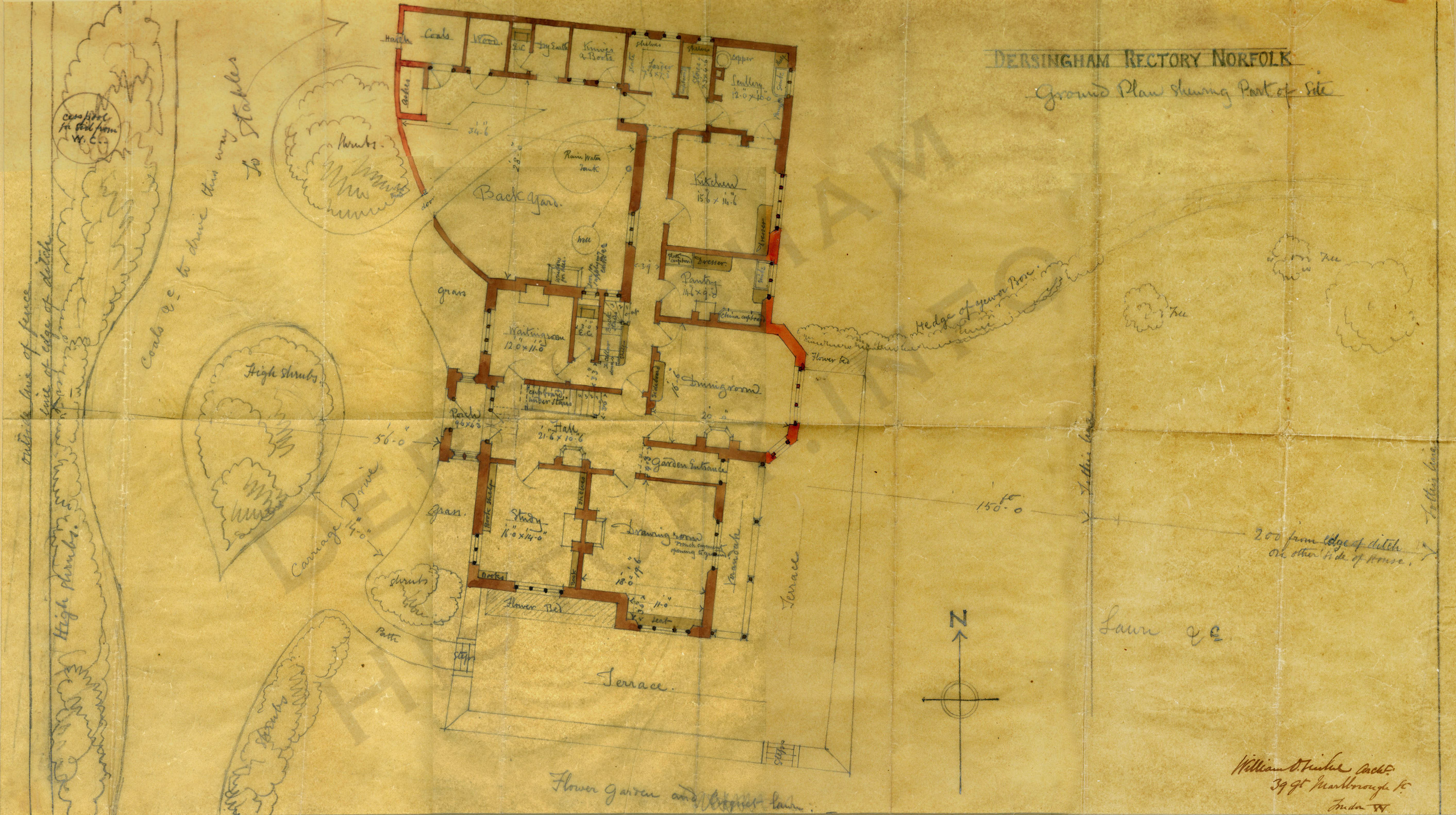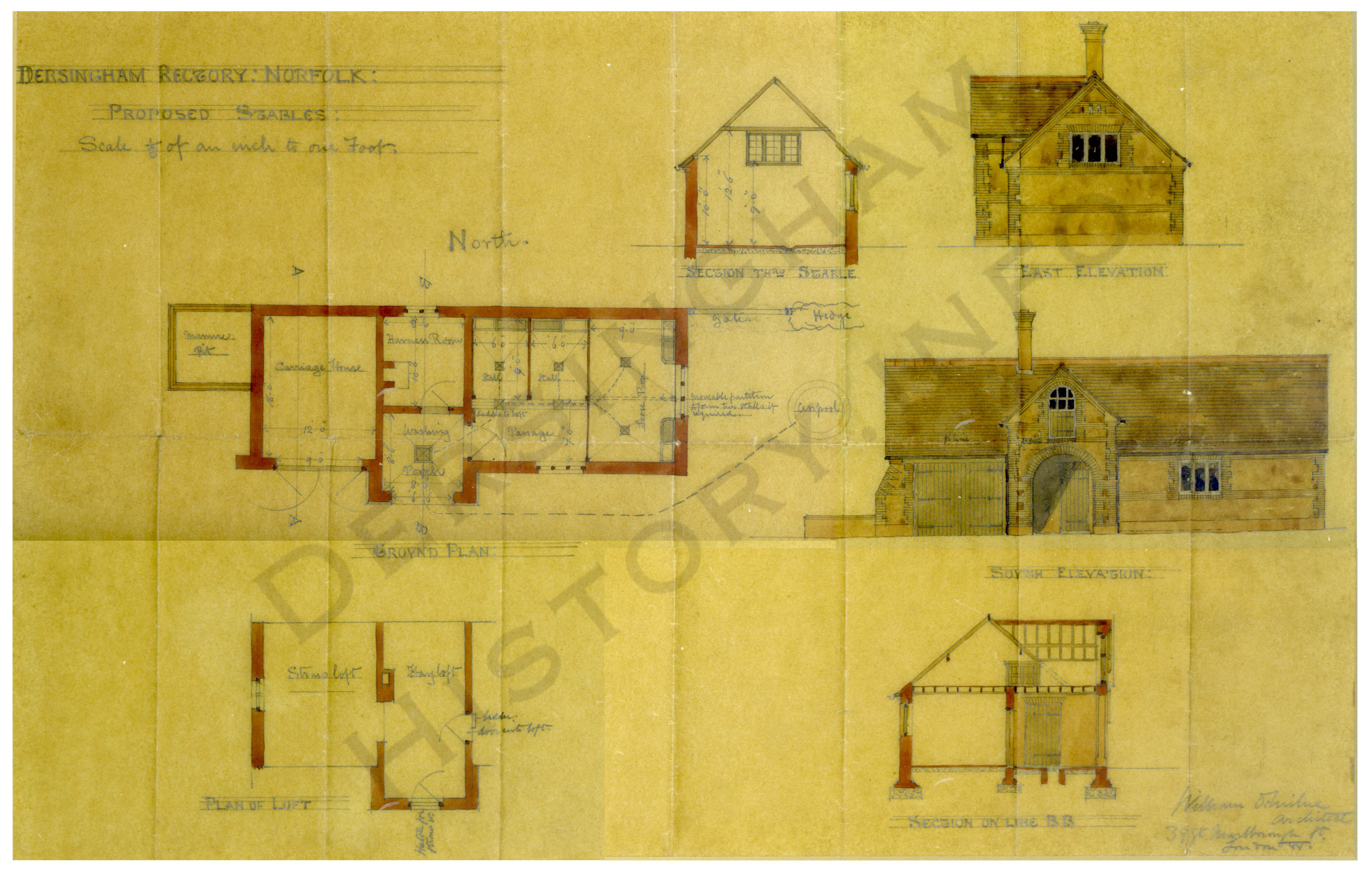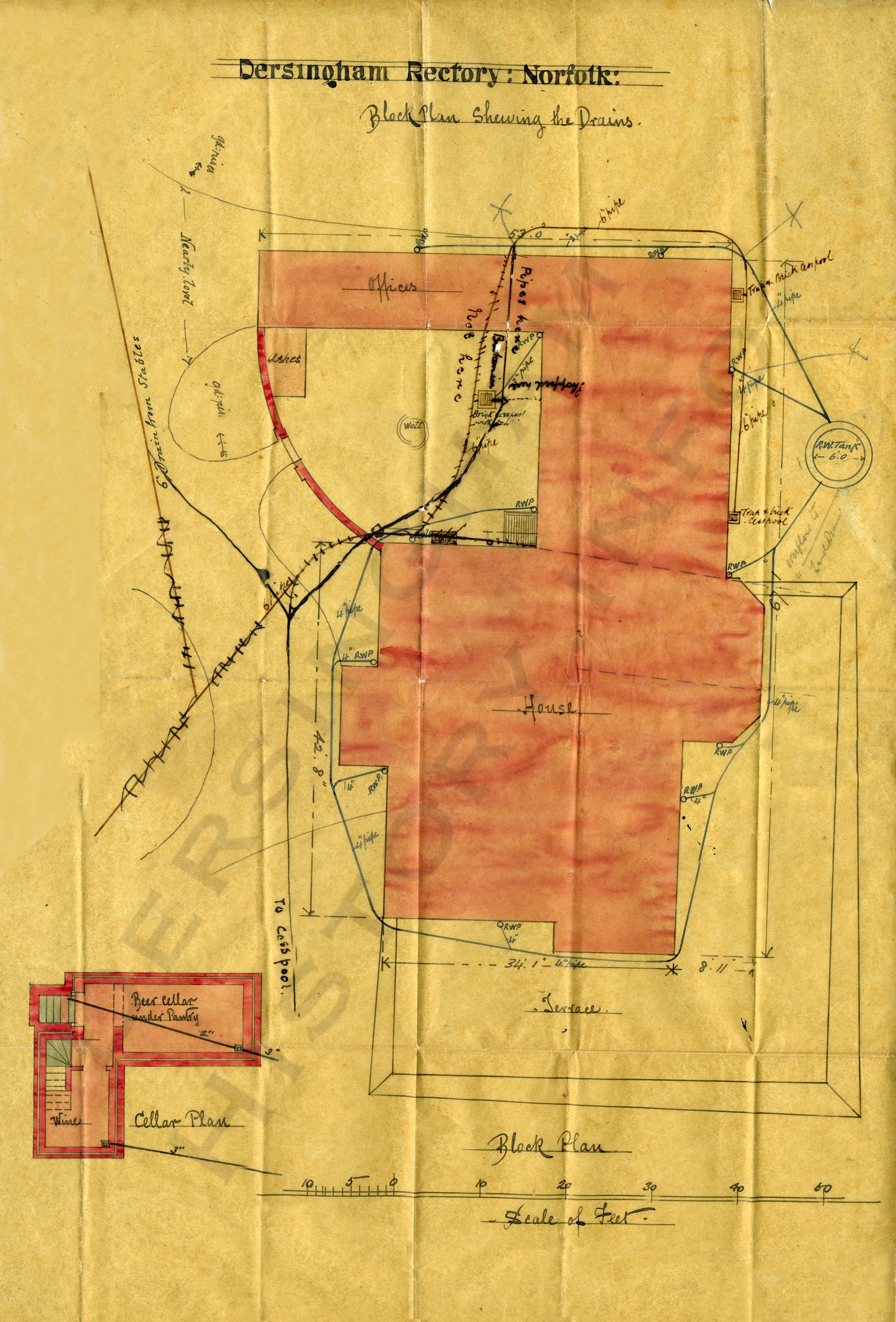The Destruction of the Vicarage
We learn a little more at this time of the house that been provided for the vicar. It was described as a “small studded clay house standing in the churchyard.” This, I believe, is a form of wattle and daub and it was probably thatched. However, like the church it had been badly neglected over the years, particularly now during these difficult times. In 1656 John Pell, whose grand Tudor Mansion stood opposite the church about where the entrance to our surgery is, ordered it to be pulled down. He certainly did not like such an eyesore outside his front gate and the fact that no one had been appointed as vicar here for so many years was an additional factor for its decline.
We learn even more about this former vicarage in 1709 from a document that recorded the property and tithes belonging to the vicar. It was described as
“Ruins of one vicarage house long since dilapidated with some old walls remaining, with barn containing two golfsteads with a yard containing 30 perches of land.”
So, when finally William Houghton was welcomed to the village as its vicar in 1660 after such a long absence where was he housed? In 1690 when Valentine Pell, the last member of that family, died childless he willed all his property to his cousin Robert Walpole of Houghton Hall who subsequently allowed the grand Pell House opposite the church to be used as a home for the vicar. So it seems likely this became William’s home.
In 1678 William Houghton was reported to the Bishop for, “not keeping his vicarage house in good repair”. This would seem a little hard if it was referring to the original house which Pell had ordered demolished some twenty years before. Yet it may have been Pell’s old Tudor house that was being referred to.
Stephen Beaumont, vicar 1700-5, was probably housed there also. Thomas Gill took up his position in 1705 and certainly moved into the Pell House. We know this because in 1726 he had become most concerned to hear that he and his successors might be required to renovate or replace the original vicarage in the churchyard. The cost was such that he would be unable to meet it so he wrote to John Lang the Bishop of Norwich to plead his cause.
In the Bishop’s reply we learn even more about the original house, “a small studded clay house belonging to the said vicarage situate before the gate of the Capitate Mansion of one John Pell Esq. which vicarage house being in a ruinous condition was by the said John Pell’s direction pulled down many years before”.
The Bishop valued the present vicarage at £40 and he estimated that to, “newbuild a decent substantial house for a Minister and his family will cost £200.”
He agreed that such a sum could not be afforded by Gill or his successors so a dispensation was granted. Much to Gill’s relief I am sure.
When Samuel Kerrich was instituted as vicar on August 25th 1729 he wrote, ”I dwell in a house of Lord Orford’s near the church in which my predecessor lived for many years.” (Lord Orford one of the titles of the Walpoles of Houghton Hall)
Samuel had only recently married Jane Kitchingham so he travelled to Dersingham first leaving Jane in Cambridge while he spent much time making necessary improvements to the old House to welcome his bride.
Sadly Jane suffered a miscarriage in 1730 and was too ill to travel but Samuel continued to work on the improvements to the house. Jane never saw the old house as she died following a further miscarriage in 1731. She was buried in Cambridge.
Samuel did marry again and he and his wife Barbara lived in the Pell house for 24 years but it was becoming increasingly dilapidated. It was, after all, 200 years old and subject to frequent flooding as we learn from letters Barbara wrote to her sister. “ I am washed out of all ye rooms below stairs.”
Samuel wrote to Lord Orford’s agent saying that he would gladly stay where he was if repairs were carried out as some parts of the house had become “untenable”. Nothing was done so in 1753 Samuel and his family moved into Dersingham Hall. Unfortunately for us some time later it was obviously decided that to renovate the old Pell House would be too expensive and it was consequently demolished. Thus Dersingham Hall came to serve for a time as home to our vicars.
The Nineteenth Century
In Faden’s map of Norfolk for 1797 it can be seen that Dersingham Hall was the residence then of a Mr.Hammond.
Thomas Kerrich who was our vicar at that time was the son of Samuel Kerrich and had grown up in the old Pell house by the church. He would have been about five years old when the family moved into Dersingham Hall. He came here as vicar in 1784 having been recommended for the position by Dixon Hoste of Ingoldisthorpe Manor who was the patron of the living. As Thomas held several positions in both Cambridge and Peterborough he would have to have balanced his duties as vicar here with those responsibilities. I suspect he was often away but at the time of writing I cannot state with certainty where he and his family lived when here in Dersingham. He died in 1828 at his house in Cambridge but was buried in our Church's chancel.
It is at this point that the Bellamy family of Ingoldisthorpe Manor become very influential in our village. In descriptions of the village in the Directories from 1836 we are told that John Bellamy Esq. of Wisbech and Lord Cholmondeley (Houghton Hall) own a great part of the soil and are Lords of the Manors, West Hall, Pakenham, Gelham, Shouldham Priory, and Brook. Lord Cholmondeley is the lessee of the rectorial tithes but the advowson was in dispute between R. F. G. Dalton and John Bellamy. This matter seems to have been resolved in favour of John Bellamy who became the patron of the Living and this right would pass on to other members of his family who inherited the Manor.
In 1840 John Bellamy’s son Edward,of St. John’s College Oxford, is appointed as the vicar for Dersingham and Castle Rising. During his incumbency Edward resides at Ingoldisthorpe Manor and on his father’s death inherits the property.
In the 1861 census he appears as Vicar of Dersingham, widower with just a house servant and cook with him. His wife Mary had died in 1840. By the 1871 census he is still living there alone but is now recorded as Rector of Dersingham. He retired in 1871 and died three years later in 1874 and is buried with his wife Mary in the churchyard at Ingoldisthorpe.
The Manor was inherited by Edward’s nephew the Rev. James Bellamy D.D., President of St. John’s College Oxford who acted as executor to his Will. James’ father was James William, Edward’s younger brother and his mother was Mary Coates Cherry. James had three brothers. although Thomas had died when only 4 years old, and three sisters one of whom was Eleanor Coates Bellamy born1824 and of whom we will learn more later.
After Edward’s death James, as Patron of the Living, recommended William Tylden then the Rector at Standford in Kent for the vacant position. William’s father was William Burton Tylden who had served as a British Army Officer for 43 years in the Royal Engineers, a career William’s brother Richard also followed. Significantly, in October 1852, William had married Eleanor Coates Bellamy, the sister of James and they had three sons Richard, William and Henry. His appointment as the Vicar of Dersingham was approved and he and his family moved here and naturally took up residence in Ingoldisthorpe Manor. The Rev. James Bellamy had many duties and commitments to meet in Oxford but was often to be found here in Ingoldisthorpe with his sister Eleanor, William and all their family.
Sadly William Tylden died in February 1875 at just 57 years of age so after only four years a new vicar had to be appointed.
A New Era
Life in Dersingham had changed dramatically over the past few years. The railway had revolutionised travel and the Royal Family in the person of the Prince of Wales and Princess Alexandra had taken up residence in Sandringham Hall. Local Inns were already boasting in their advertising that they were close to the Royal residence and could met visitors off the trains with suitable transport. By the early 1870s the population of the village was expanding rapidly and new houses were being built all the time. The villagers would have been only too aware that their church was now described as extremely dilapidated and that there was no suitable residence in the village for their vicar. The fact that members of the Royal household were already taking an interest and supporting village activities was appreciated so it was decided that something needed to be done.
Money was raised and the Prince of Wales gave land to the village at a peppercorn rent for a school to be built at the bottom of Doddshill to cope with the rising number of children in the village. The fine new school opened in 1875. The church was thoroughly renovated with new seating, lighting and other furniture. A new organ was installed and the transformation of the church was great indeed.
In the meantime a new vicar was appointed. Edward William Penny arrived here in 1875 and would serve the village with distinction until ill health forced his retirement in December 1900.
Edward was born in Ash Kent and had attended the Casberd School of St. John’sCollege Oxford from where he gained his qualifications just like his predecessor and of course his patron James Bellamy, the President of that same college. Edward held several appointments but immediately prior to arriving here from 1873 -5 he was the curate at St. Mary’s Church, East Ham where, as we shall see, he was very highly thought of by the Vicar Samuel Reynolds and his wife Edith.
With the arrival of the new vicar a solution had to be found to the problem of the absence of a vicarage.
Again, with the generous support of the Prince of Wales, James Bellamy arranged to buy from the Sandringham Estate a portion of land close to the church for the purpose of building a fine new Vicarage.


